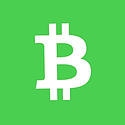The FOMC statement had small tweaks to the language but the most important sentence - that the FOMC can be patient in beginning to normalize the stance of monetary policy - was repeated. This in effect means that rate hikes are off the table at the March and April meetings. The vote was unanimous, but note that the three dissenters from December have all become non-voting members after the annual rotation of voting rights at the FOMC.
One notable change in the statement is that international developments are now mentioned directly as a part of what the FOMC watches in determining how long to maintain the fed funds rate at the current level. What exactly is meant by this phrase is unclear, but the most obvious is global economic developments. Whether it also refers to central bank actions and their impact on the US dollar is more unclear. The minutes released in three weeks will make us wiser.
Otherwise, the statement acknowledges the downward trend in inflation and the drop in market based inflation expectations, but remains of the view that it is driven by transitory effects. The statement repeats that the FOMC expects inflation to rise gradually toward 2 percent, but adds, over the medium term.
The description of the job market was upped and notably the statement didn’t mention the December decline in average hourly earnings. Instead, job gains were described as strong (compared to solid in December) and underutilisation of labour resources continued to decline.
This leaves us with an FOMC which seems ready to hike rates despite low and declining inflation, if it is convinced that inflation will pick up later and the labour market will continue to improve. However, the mentioning of global economic developments suggests that it might not be enough for the FOMC that the domestic economy is on track, if global economic growth is faltering. This raises the likelihood of a later hike than we currently anticipate (June 2015).
Key data to watch this week is the Employment Cost Index released together with Q4 GDP data on Friday. This will give us more correct data on wage inflation and show whether the latest employment report's steep drop in average hourly earnings was a fluke. If the index shows a similar decline in wage growth, we will reconsider our call for a June rate hike, but for now stick to our view.
This publication has been prepared by Danske Bank for information purposes only. It is not an offer or solicitation of any offer to purchase or sell any financial instrument. Whilst reasonable care has been taken to ensure that its contents are not untrue or misleading, no representation is made as to its accuracy or completeness and no liability is accepted for any loss arising from reliance on it. Danske Bank, its affiliates or staff, may perform services for, solicit business from, hold long or short positions in, or otherwise be interested in the investments (including derivatives), of any issuer mentioned herein. Danske Bank's research analysts are not permitted to invest in securities under coverage in their research sector.
This publication is not intended for private customers in the UK or any person in the US. Danske Bank A/S is regulated by the FSA for the conduct of designated investment business in the UK and is a member of the London Stock Exchange.
Copyright () Danske Bank A/S. All rights reserved. This publication is protected by copyright and may not be reproduced in whole or in part without permission.
Recommended Content
Editors’ Picks
AUD/USD extends its upside above 0.6600, eyes on RBA rate decision

The AUD/USD pair extends its upside around 0.6610 during the Asian session on Monday. The downbeat US employment data for April has exerted some selling pressure on the US Dollar across the board. Investors will closely monitor the Reserve Bank of Australia interest rate decision on Tuesday.
EUR/USD: Optimism prevailed, hurting US Dollar demand

The EUR/USD pair advanced for a third consecutive week, accumulating a measly 160 pips in that period. The pair trades around 1.0760 ahead of the close after tumultuous headlines failed to trigger a clear directional path.
Gold bears take action on mixed signals from US economy

Gold price fell more than 2% for the second consecutive week, erased a small portion of its losses but finally came under renewed bearish pressure. The near-term technical outlook points to a loss of bullish momentum as the market focus shifts to Fedspeak.
Bitcoin Cash could become a Cardano partnerchain as 66% of 11.3K voters say “Aye”

Bitcoin Cash is the current mania in the Cardano ecosystem following a proposal by the network’s executive inviting the public to vote on X, about a possible integration.
Week ahead: BoE and RBA decisions headline a calm week

Bank of England meets on Thursday, unlikely to signal rate cuts. Reserve Bank of Australia could maintain a higher-for-longer stance. Elsewhere, Bank of Japan releases summary of opinions.